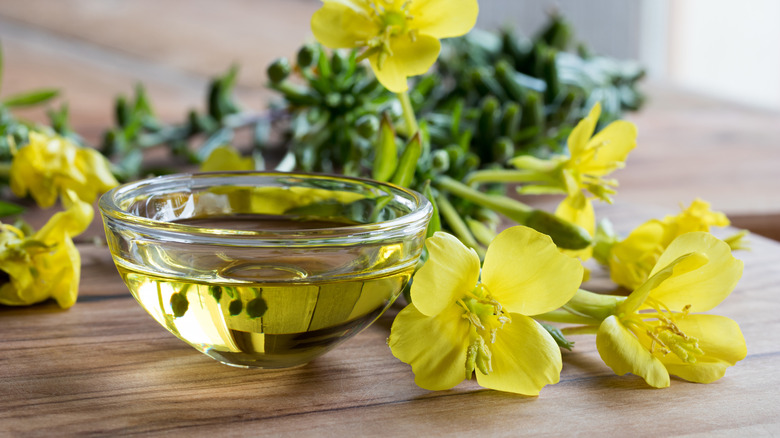Why You Should Add Primrose Oil Into Your Skincare Routine
Most people know how important it is to have a skincare routine. The skin is our largest organ, covering 22 square feet of our body (according to National Geographic). It's also the most noticeable, and prone to wearing down over time. Properly taking care of your skin can have numerous benefits, including helping you look younger. Preventing acne, avoiding skin cancer, and preventing skin problems is much easier — and cheaper — than fixing them, explains the Skin Center of South Miami.
However, finding what works best for your skin is tricky at the best of times, and a confusing nightmare at the worst of times. Primrose oil is a botanical oil with many beauty benefits, although it doesn't have the same marketing buzz as other popular skin oils. The lightweight oil first became popularized in the 1600s in Europe, where it was used as a kind of cure-all, according to Kiehl's. Primrose oil may be something to add to your skincare routine.
The benefits of primrose oil
Evening primrose oil, also known as EPO, comes from the seeds of a native plant in North America (via Healthline). These seeds have tons of omega-6 essential fatty acids, specifically linoleic and gamma-linolenic acid. These are big words, but essentially, they help to lower inflammation and moisturize the skin, explains Byrdie. People with eczema or overly dry skin may find daily use of primrose oil beneficial.
It should be noted that the benefits of primrose oil are mostly anecdotal, with few clinical studies being done — although there is some research to back up its benefits. According to the National Institutes of Health, not having enough essential fatty acids, like the ones found in primrose oil, can lead to dry or rough skin. However, those with acne may want to talk to their dermatologist first before trying primrose oil, as using oil on acne-prone skin can clog pores.


